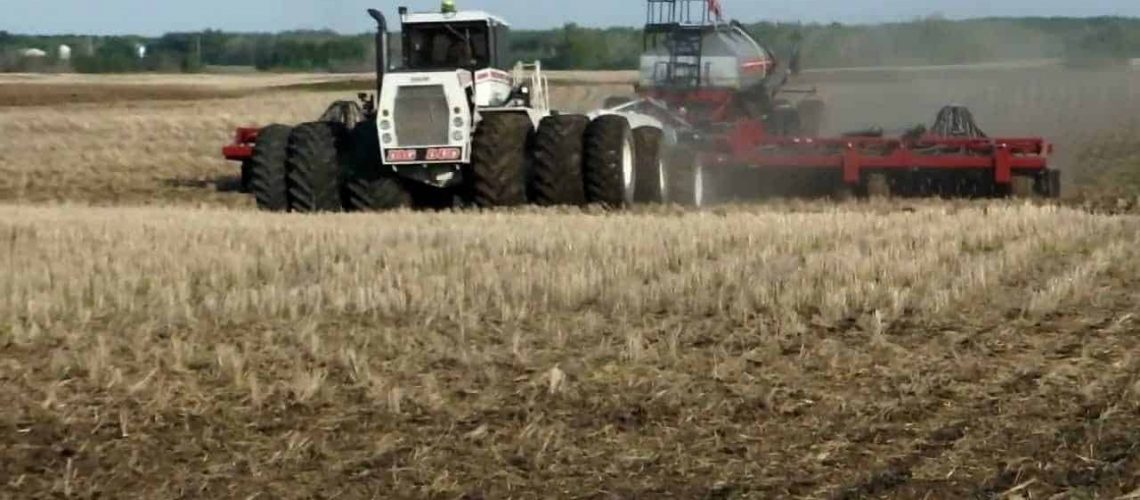AT the recent WAFarmers annual conference, Agriculture and Food Minister Alannah MacTiernan noted the regular calls to action I was giving her in these pages and questioned why I had not been more proactive making things happen when I was chief of staff to a previous agriculture minister.
A fair question but as a staffer my job then was to give advice, not to make decisions – that responsibility is with ministers.
In politics, good ministers will listen to their industry and their advisers, while bad ministers tend to ignore their industry and sack their advisers when they don’t like what they are hearing.
In my current role as chief executive officer of WAFarmers, my job is to listen to industry and give some frank advice about what needs to change if we are to sort out industry representation and protect farm businesses from bad ministers.
In previous opinion pieces I have written about ‘Lifters and Leaners’ and ‘All for One and One for All’, which highlight the fact that to have influence in the political world, farmers need to be members of a single peak body.
Now we need to talk about the drivers behind membership and what is holding people back from becoming members of organisations such as WAFarmers and how we can fix it so that we can play a bigger role in national debates.
Those organisations that have been able to mobilise most of their industry members into one body are today running big tracked tractors that can pull back on bad ministers.
In our case we are running two wheel drive tractors and it’s time for us to gear up, especially as we will in all likelihood be facing a Federal Labor government within eight weeks which is unlikely to be sympathetic to your bottom line.
We have recently seen the importance of big horsepower in a text book example of political lobbying run by the Rock Lobster Fishery in WA, where all the fishers are members of WA Rocklobster Council.
In a short sharp campaign, alongside WA fishing families, they managed to roll the State government’s push to nationalise 17 per cent of their fishery by running a hard hitting, well-funded and co-ordinated political lobbying effort.
Just as we are about to see the CFMEU force a Shorten government to roll up the building industry watch dog, a strong membership base and a single voice can drive both oppositions and governments to fall in line with their views.
Internationally, we see the same thing, where the United Kingdom, the United States and New Zealand all have well supported farmer representative bodies that have a majority of the industry as members.
As a result governments trip over themselves to curry favour with these peak bodies.
Not so in Australia.
When big issues hit our industry out of the woodwork comes a myriad groups claiming to represent agriculture.
It then becomes a bizarre world of competing farm bodies crowding the corridors in Canberra all attempting to get MPs and ministers to open their doors and listen.
There are just too many farm organisations, many with limited memberships sending too many fragmented and conflicting messages into the media and parliament – it’s a mess.
As a result, WA Wheatbelt growers should heed the advice of Rob Kerin who is president of South Australia Primary Producers Association and a former farmer, agronomist, agriculture and premier, who told us at our conference that governments only listen to well resourced, well organised and well represented peak bodies.
He offered up the example of the South Australia model with its strongly supported, opt-out membership structure backed through State legislation.
The model raises a fee for service of 20 cent a tonne all tied to industry approved projects such as reviews into their grain transport system, or engaging with GRDC to support local research funding.
It’s the best model in Australia, with 98pc of farmers opting to remain part of the organisation.
In WA we have 13 industries from wine to vegetables that have a fee for service model in place run through the Agricultural Produce Commission that supports their industries to run projects on biosecurity risk reviews, economic regulatory impact modelling and legal advice on water rights and policy development for members.
It’s hard to imagine that our biggest agricultural industry – grains, worth more than $7 billion – would not benefit from a more co-ordinated and better funded approach when it comes to industry representation.
Grain farmers in WA are allocating 1:7000 of their collective grain cheque on industry representation which implies they either have a vast amount of faith in their politicians, or they are happy to continue leaning on their neighbour to write a cheque.
As we head towards 2020, our grains industry is facing serious State and national co-ordination challenges many of which will be thrashed out over the next few years, setting the scene for the next decade to 2030.
A 16c/t fee for service on grain locked in for a single three-year period would raise the funds needed to support a radical overhaul of State and national representation, and address key issues.
To start with, the funding should be used to bring together the 1000 WAFarmers grain producers, the 100 WA Grains Group and the 75 PGA grain growers under one umbrella – let’s call it the WAFGGGA so everyone feels included.
These 1175 growers would represent about half the growers in the State and well over half the total production.
By offering a simple opt-out formula, the industry would overnight be almost 100 per cent represented and then for the first time in a position to fund the economic and cost benefit studies that are now standard fare for building cases against bad government policy.
Be it the need for rail, road or mobile phone towers, the days of signing petitions, writing letters and drafting submissions in-house to get government funding are long gone.
If the industry wants to keep its fuel rebates or grow off farm deposits limits, have mobile black spots funded or water piped to country stand pipes then it needs to commission economic studies by reputable consultancies, such as KPMG and PriceWaterhouseCoopers, to build the case.
This is the way the world works in modern policy development, look at the scientific work that the live exporters are scrambling to do on the issue of the 28 degree wet bulb on animal welfare.
This sort of work costs industry serious money and industry needs to be in front of the game and united in how it lobbies.
If the recent jury decision on glyphosate in the United States is not a warning shot that a $7b grains industry needs to build the structure and the professionalism to engage in complex policy debates with world-class consultants riding shot gun, then the industry is setting itself up for a big fall.
Just ask the French farmers what life looks like with their looming ban on glyphosate in 2021 and what they would now pay to convince government to keep it legal.
Let’s not end up in the same situation – the next government is highly likely to dream up something nasty that hits farmers bottom line.
A well-funded WAFGGA (I prefer WFA Wheatbelt Farmers Association) with all 3500 grain growers in WA as members could set itself the task of addressing a wide range of issues impacting growers.
These would include addressing the carve up of the $70 million that is flowing east in GRDC levies, and pushing for the State government to stop cuts to the agriculture department so that our grower groups are being properly supported.
They are all in the interest of WA growers and will in the long-term cover the cost of the 16c/t.
By not having a single strong grains voice in WA analysing the flow of cash out of grower’s pockets to Canberra and back, we are simply running blind.
Think of it as paying your accountant or lawyer to track down expenses that are lost in a complex legal and accounting structure.
Growers don’t like paying levies but as the total pool of funds rises towards $100m we should be prepared to put $2m a year into a compliance system that effectively tracks this money in the interest of WA growers.
Such a funding structure would be limited, targeted and focused on policy not politics, how the existing bodies fit in will be up to the new structure, but to do nothing and hope that the zones and growers will come back to WAF, PGA and WAGG is like hoping the millennials (1980s on born) will give up their mobile phones and discover talking to people in meetings.
It’s not going to happen, this coming generation as they get hold of the farm cheque book, won’t be sending cheques to farm organisations as they network and engage differently to the baby boomers that fill the ranks of the existing farm organisations.
No doubt there will be loud detractors from following the successful South Australian model, the mouse that roars will be Puffing and Gruffing Aloud (PGA) about no more levies, but if the mouse is sitting on a stack of grain it can always opt out and roar away, but the rest of the industry needs to work to protect the grain with the sort of horsepower only money from all growers can buy, not the few and declining membership left supporting WAF, PGA and WAGG.
If that price is 16c/t for three years = 50c then maybe it’s time to put down the guns and crank up our new latest model tractor to full roar and start pulling our weight in politics.
Trevor Whittington,
CEO
Tell us what you think, leave a comment below!











